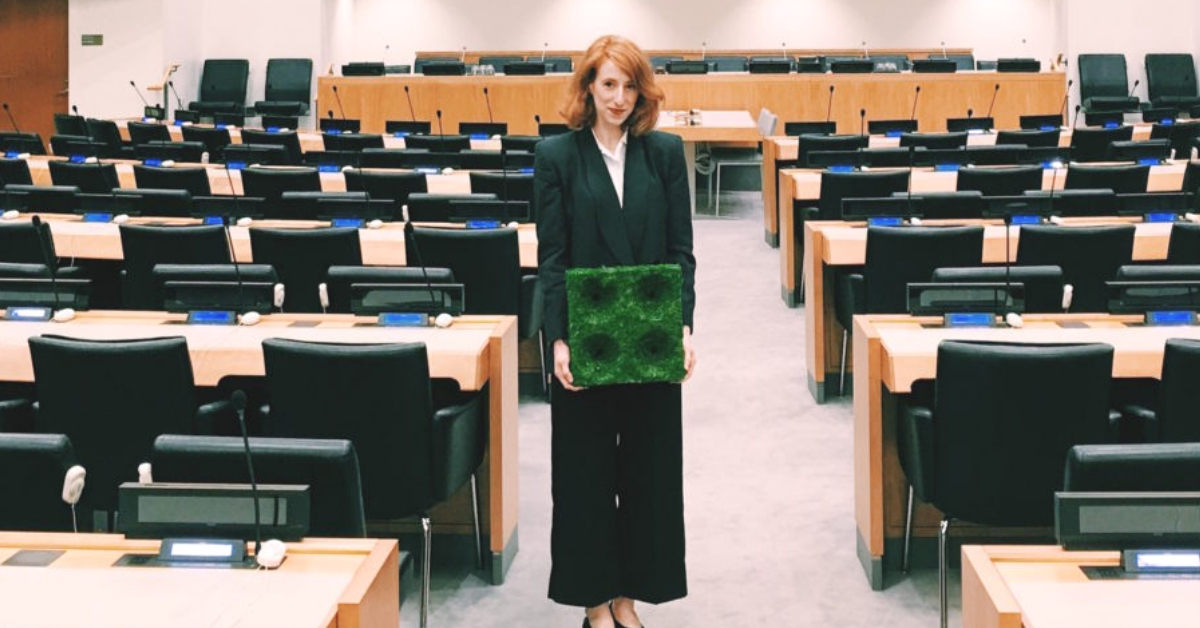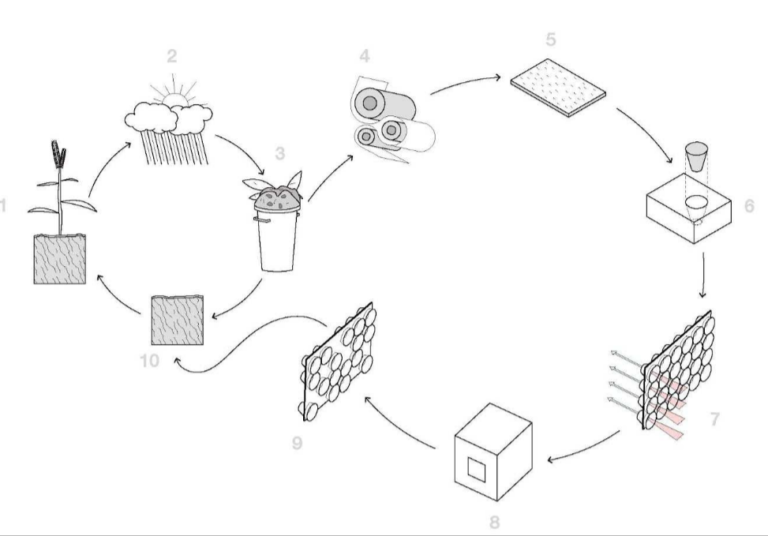Zero-Electricity & 1% the Cost of AC: This Harvard Innovation Can Ease Delhi’s Air Woes!
The team further claims that one tonne of agricultural waste will produce about 100 Green Screens and prevent approximately one tonne of carbon dioxide from entering the air.

It is that time of the year again when Delhi suffocates under thick smog, and the air quality levels fluctuate between “very unhealthy” and “hazardous.” Firecrackers burst during Diwali and the stubble burnt in the fields of Punjab and Haryana are significant contributors to the pollution in this season. To add to that, the wind direction and the topographical features of the national capital make it a hub for the pollution to settle in.
However, there is help at hand. A team of innovators from Harvard University has come up with a solution that can not only help farmers find an alternative to burning agro-waste but also keep their homes cool!
Farmers usually burn agro-waste because that is the most cost-efficient way to get rid of the post-harvest residue. A viable solution that proves profitable to the farmers will encourage them to invest in the collection, transportation and storage of the paddy.
Green Screen, an innovation by a team from the Lakshmi Mittal and Family South Asia Institute at the Harvard University promises just that.

“Green Screen is a zero-electricity passive air cooling panel installed in urban slums, made entirely of agricultural waste,” writes Gina Ciancone, a member of the Harvard team, She adds that “A hundredth of the cost of a conventional air conditioner, it is an affordable, beautiful product that not only cools people but also addresses part of why it’s so hot in the first place.”
Agricultural waste is turned into bio-pulp and then assembled on a panel. This panel is then attached on windows to passively cool the air indoors.
“Green Screen passively cools homes and reduces [the] indoor temperature in two ways. One is through air compression from the funnel shapes in the panel itself. The second is through the evaporative cooling; it produces [vapour] that draws heat from its surroundings and cools the area,” explains Ciancone.
The team further claims that one tonne of agricultural waste will produce about 100 Green Screens and prevent approximately one tonne of carbon dioxide from entering the air.

If you have seen vetiver (khus) grass curtains, hats or cooler stuffing before, you are already familiar with the primary functions of this technology. With enhanced design and technology, the team has furthered its efficiency and also brought business opportunities to farmers in Punjab and Haryana.
Speaking to the Times of India, Ciancone said, “We visited Punjab and Haryana this winter to find out why stubble burning is taking place. The product itself has been tested in the US, but large-scale production can start next year after a proof-of-concept in the coming summer.”
“Since many of the homes in informal communities are made from corrugated metal with voids acting as windows, Green Screen can be attached with a hinge system and can be kept open or closed. This technology has the potential to radically change the environment of urban slums—the areas in cities that expose their most vulnerable to extreme heat and dangerous levels of pollution,” she wrote as a news article on the Harvard University website.
You can read more about the innovation at: Harvard Team Finds Way to Turn ‘Cause’ of Delhi’s Pollution Into Cooling Panels!
The team has collaborated with Chintan, a local NGO, to test the product here in India. “This will enable us to better determine product suitability, feasibility and usefulness. Our goal is to ultimately sell Green Screens for 1% of the cost of a conventional air conditioner,” said Alex Robinson, another member of the team.
Once these cold months end in Delhi, its residents will experience a challenging summer. The Green Screen might prove to be the perfect way to utilise agro-waste, increase farmers’ income and provide eco-friendly cooling solutions in the National Capital!
(Edited by Gayatri Mishra)
Like this story? Or have something to share?
Write to us: [email protected]
Connect with us on Facebook and Twitter.
If you found our stories insightful, informative, or even just enjoyable, we invite you to consider making a voluntary payment to support the work we do at The Better India. Your contribution helps us continue producing quality content that educates, inspires, and drives positive change.
Choose one of the payment options below for your contribution-
By paying for the stories you value, you directly contribute to sustaining our efforts focused on making a difference in the world. Together, let’s ensure that impactful stories continue to be told and shared, enriching lives and communities alike.
Thank you for your support. Here are some frequently asked questions you might find helpful to know why you are contributing?


This story made me
-
97
-
121
-
89
-
167











